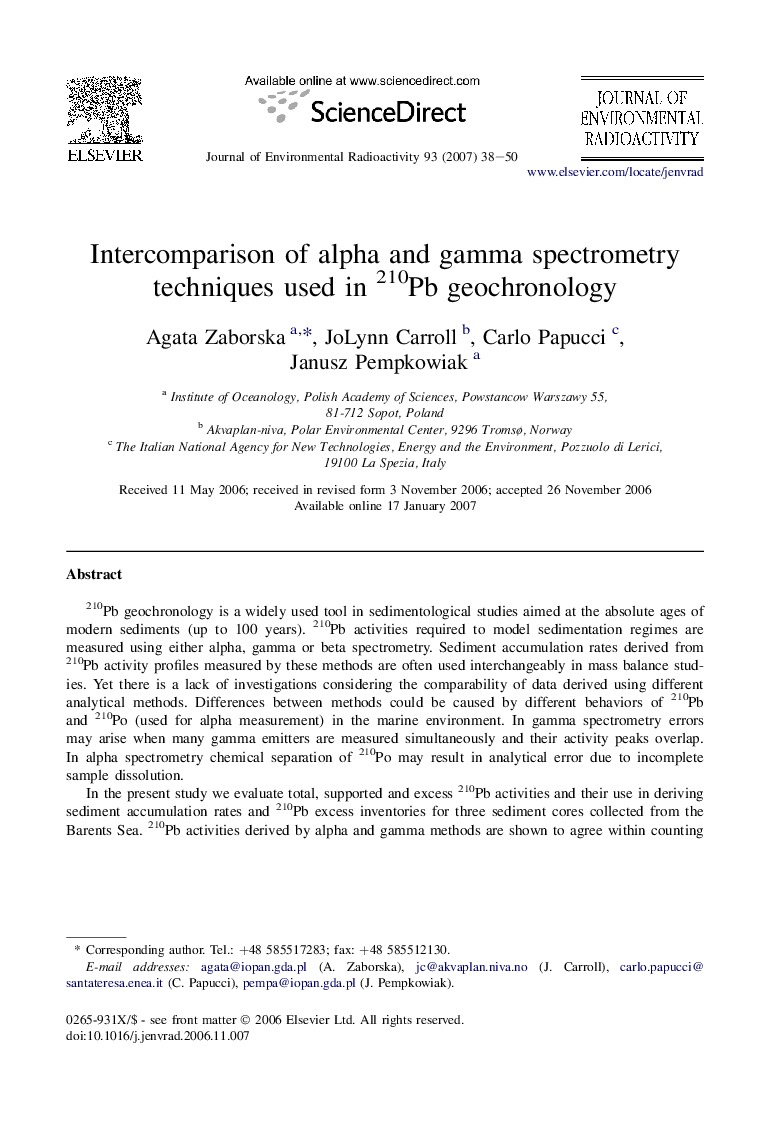| Article ID | Journal | Published Year | Pages | File Type |
|---|---|---|---|---|
| 1739505 | Journal of Environmental Radioactivity | 2007 | 13 Pages |
210Pb geochronology is a widely used tool in sedimentological studies aimed at the absolute ages of modern sediments (up to 100 years). 210Pb activities required to model sedimentation regimes are measured using either alpha, gamma or beta spectrometry. Sediment accumulation rates derived from 210Pb activity profiles measured by these methods are often used interchangeably in mass balance studies. Yet there is a lack of investigations considering the comparability of data derived using different analytical methods. Differences between methods could be caused by different behaviors of 210Pb and 210Po (used for alpha measurement) in the marine environment. In gamma spectrometry errors may arise when many gamma emitters are measured simultaneously and their activity peaks overlap. In alpha spectrometry chemical separation of 210Po may result in analytical error due to incomplete sample dissolution.In the present study we evaluate total, supported and excess 210Pb activities and their use in deriving sediment accumulation rates and 210Pb excess inventories for three sediment cores collected from the Barents Sea. 210Pb activities derived by alpha and gamma methods are shown to agree within counting error and there is also good agreement in the derived sediment accumulation rates. The inherent compatibility of analytical results based on alpha or gamma techniques is established.
